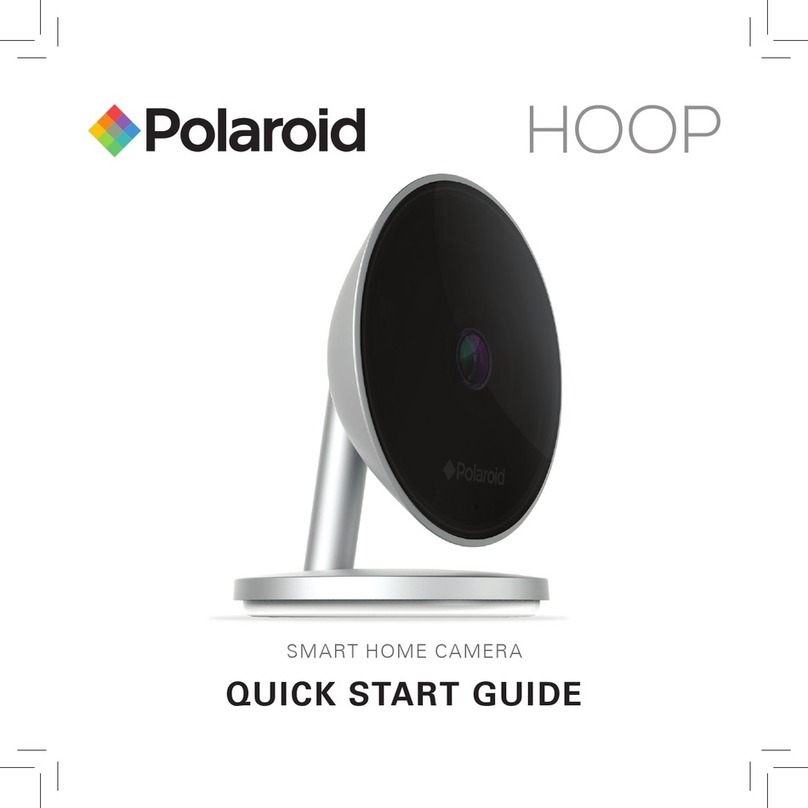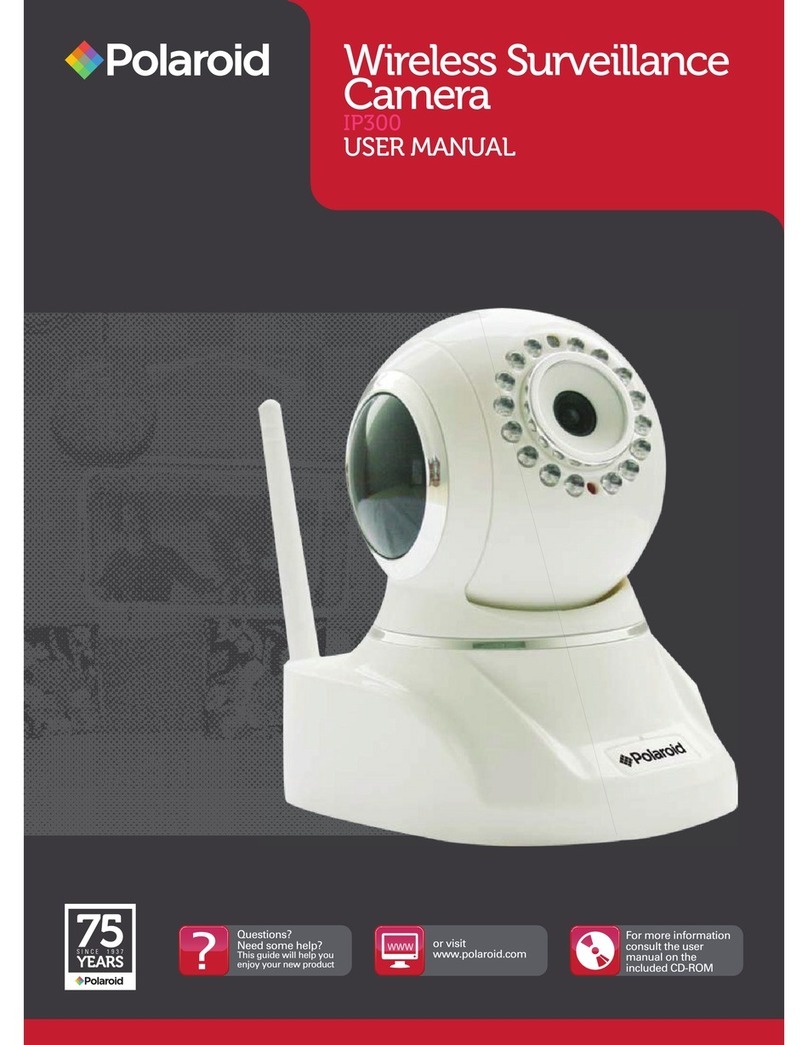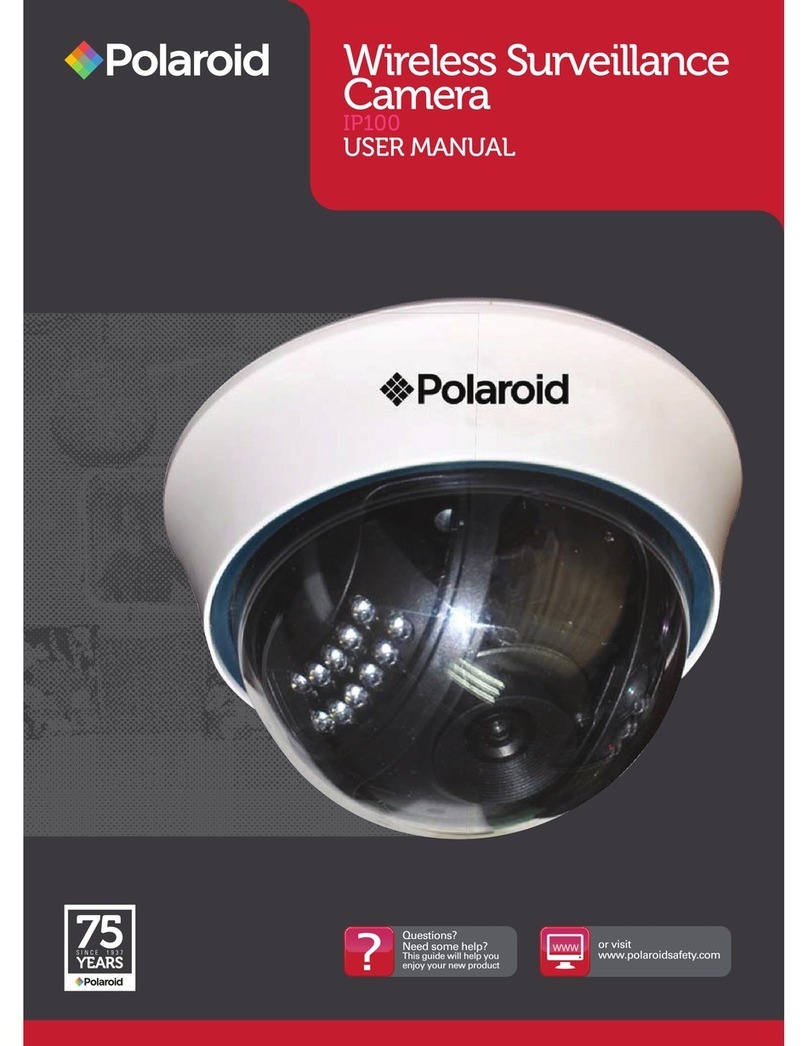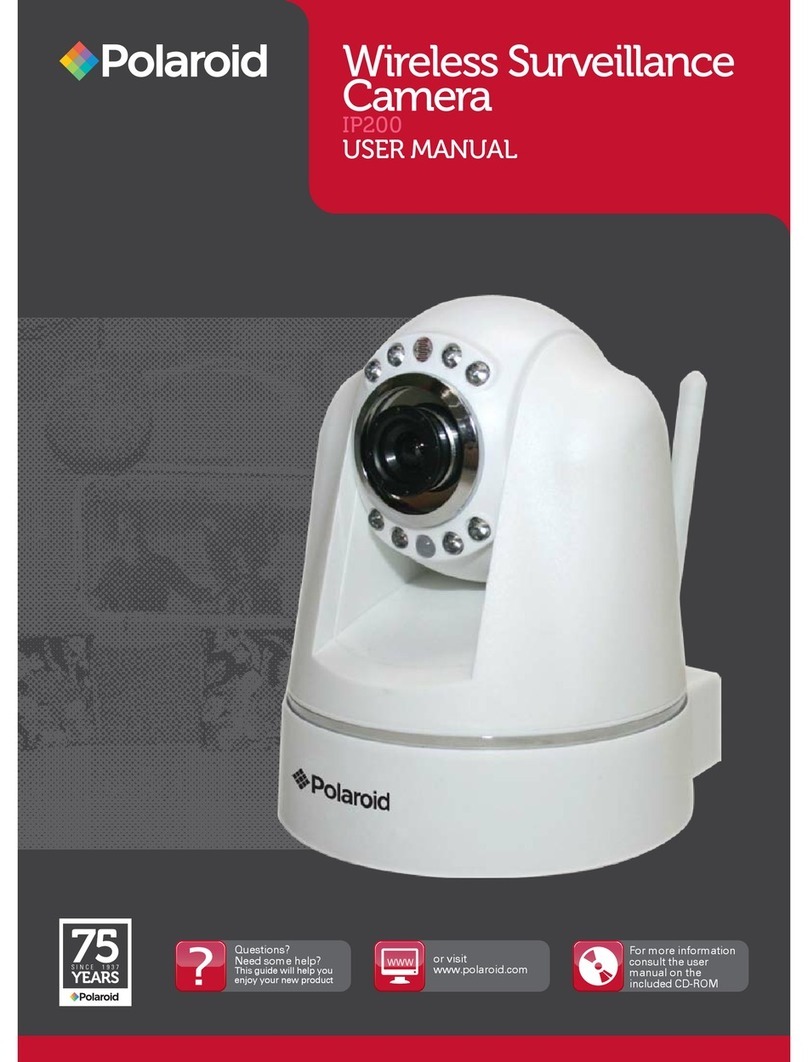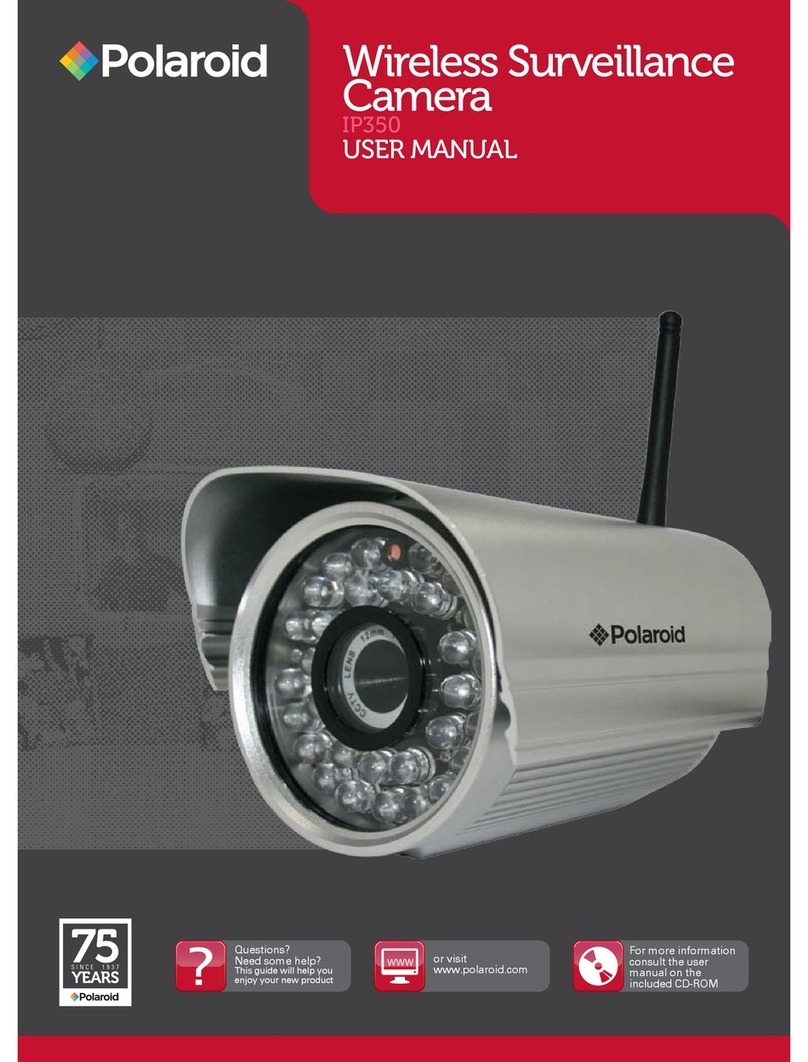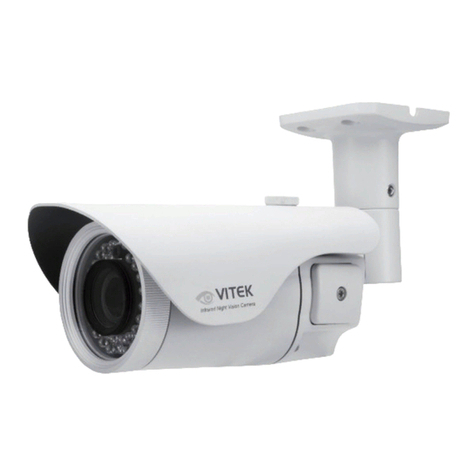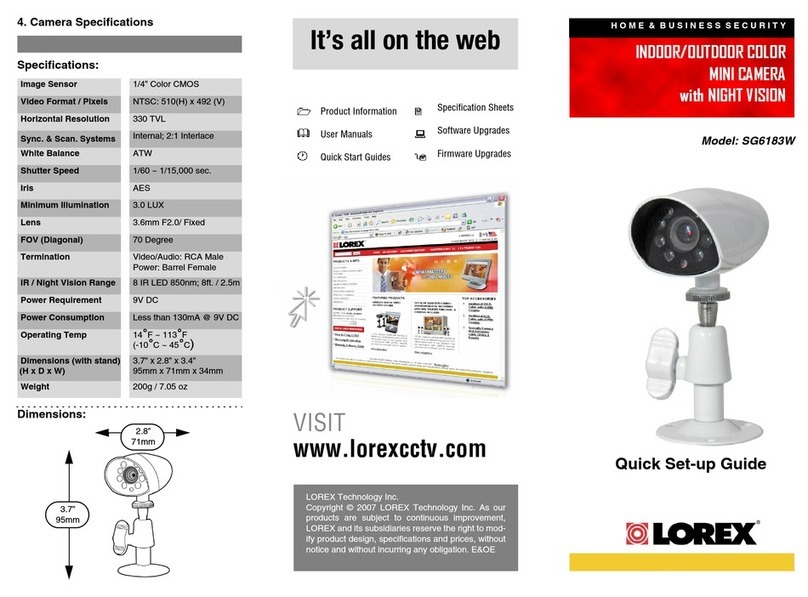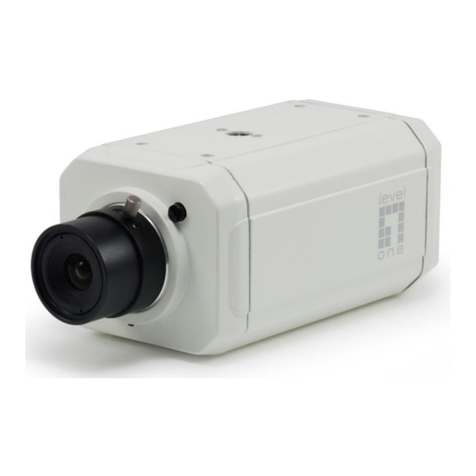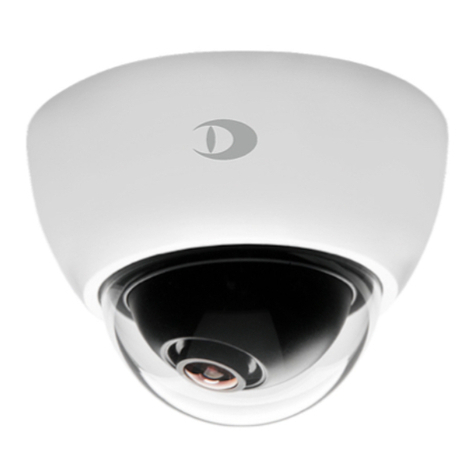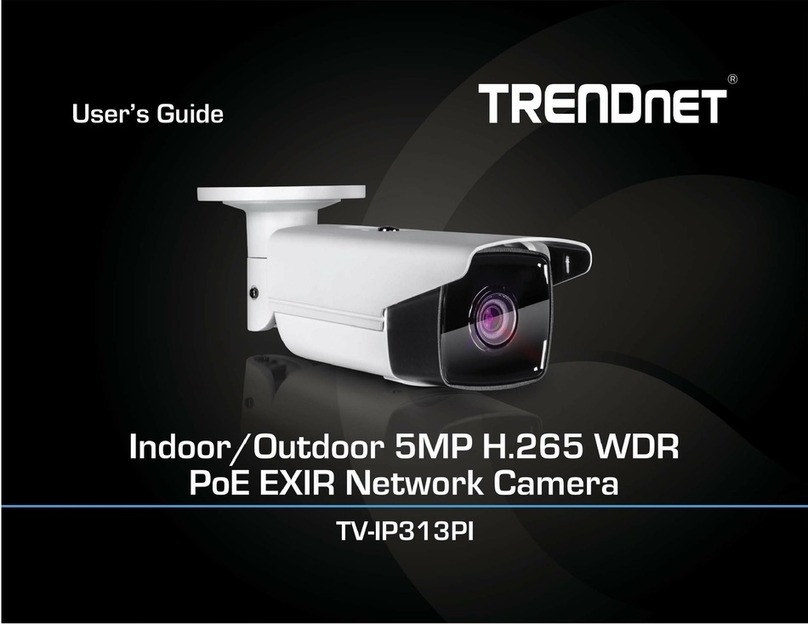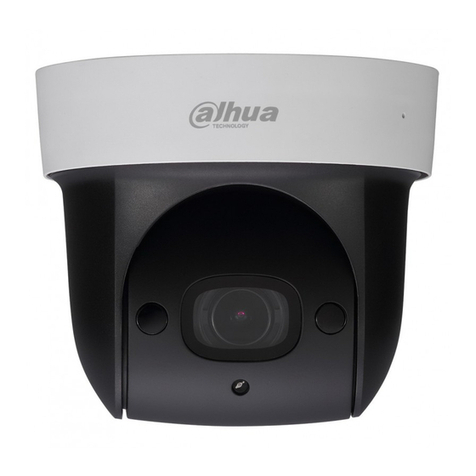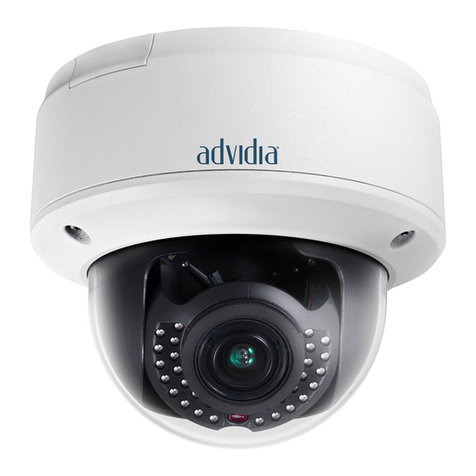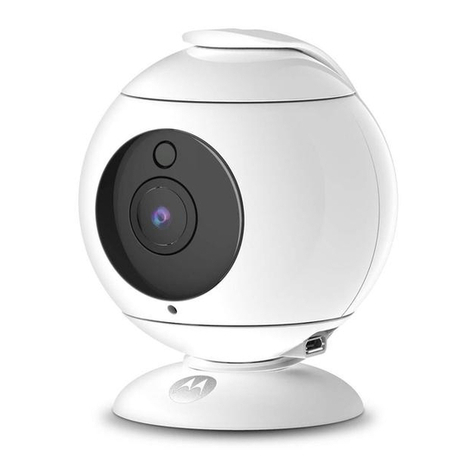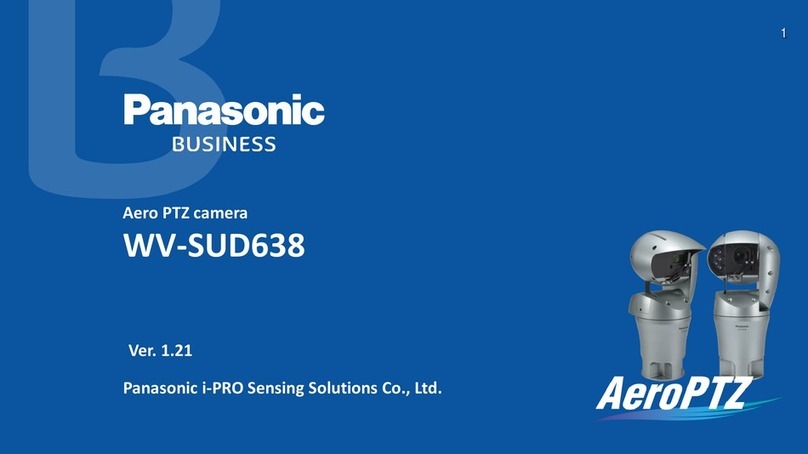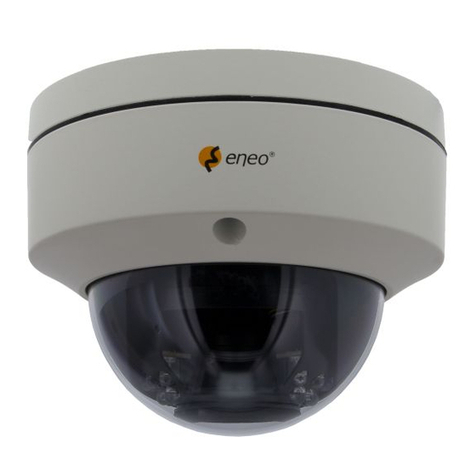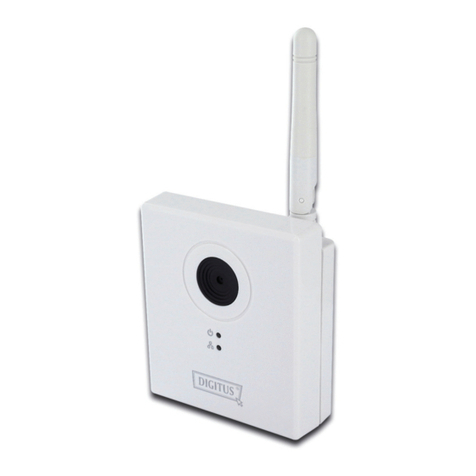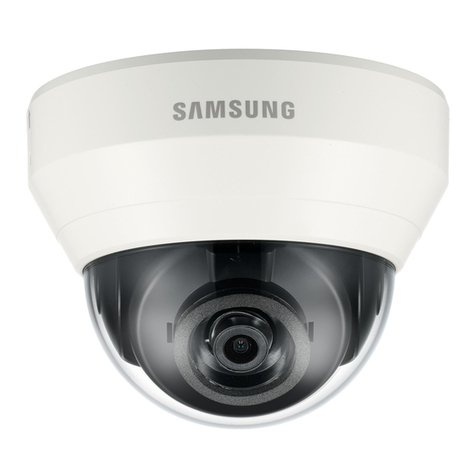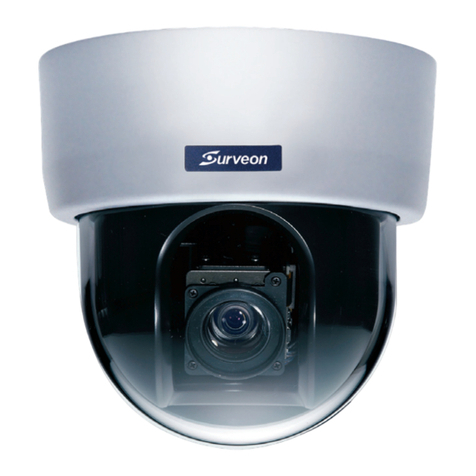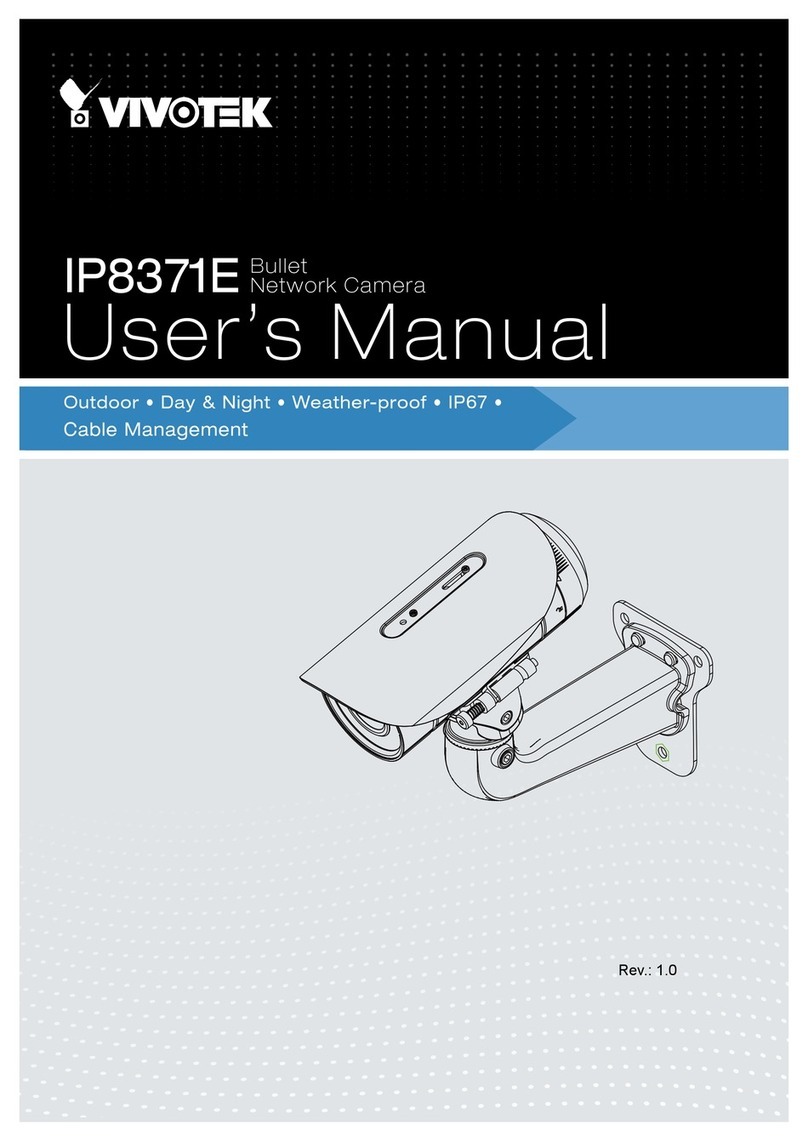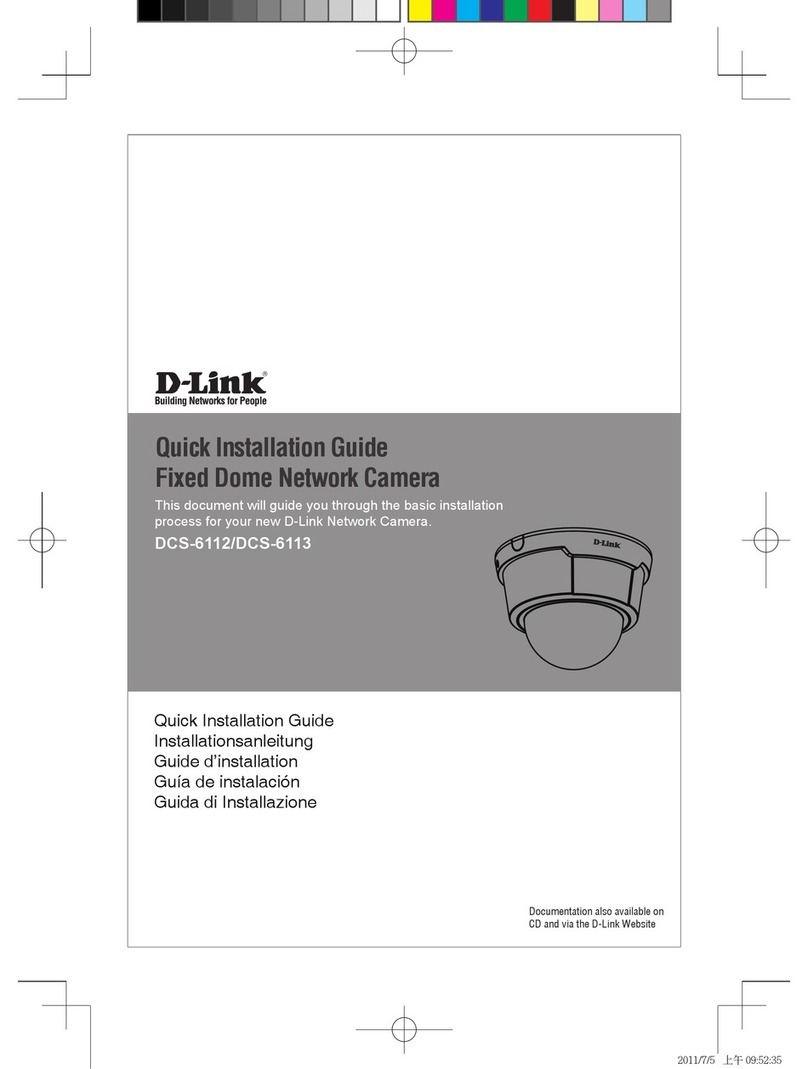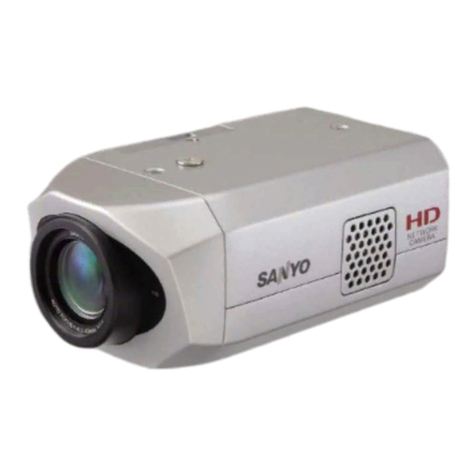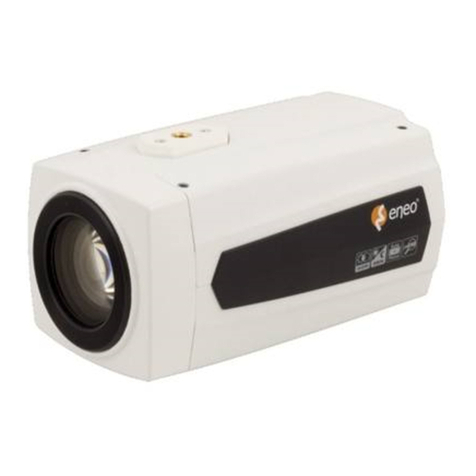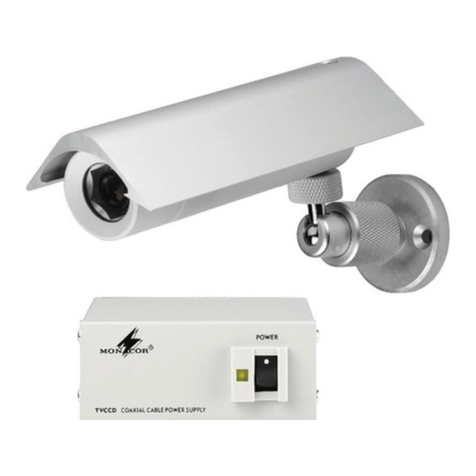Polaroid onestep 2 User manual

User
Manual

For updated information, video tutorials and more,
please visit polaroidoriginals.com/help
Pour plus d'informations, des tutoriels vidéos et plus
encore, visitez la page polaroidoriginals.com/help
Para tener información actualizada, video tutoriales
y más, visite: polaroidoriginals.com/help
Per aggiornamenti, tutorial e ulteriori informazioni,
visitare il sito polaroidoriginals.com/help
Weitere Informationen, Videoanleitungen und mehr
nden Sie hier: polaroidoriginals.com/help
ビデオチュートリアルや詳細その他更新情報については、
polaroidoriginals.com/help をご 覧ください 。
有关更新的信息,视频教程等等,请参考:
polaroidoriginals.com/help
如需最新的資訊、教學影片以及更多資訊,請造訪
polaroidoriginals.com/help
최신 정보, 비디오 사용 지침서 등에 대한 내용은
polaroidoriginals.com/help 를 방문해 주십시오
Для получения актуальной информации, учебных
материалов и посетите сайт polaroidoriginals.com/help

Inspired by the original
OneStep camera from 1977,
the Polaroid OneStep 2 is an
analog instant camera for the
modern era. It takes a moment
and turns it into something you
can hold, something you can
share, something real.
Polaroid
OneStep

4 5Parts
Diagram
ASelf-timer button BInfrared LED
CFlash
ELens
DLighten/
darken
switch
JViewnder
KFilm counter LEDs
NMicro-USB
slot
OFlash override
button
PNeck strap loops
MFlash
LED
LON/OFF switch
GFilm door latch
IShutter button
HFilm shield
FLight
meter

6 7
Bouton
retardateur
LED infrarouge
Flash
Bouton éclaircir /
assombrir
Objectif
Photomètre
Loquet du
compartiment lm
Protecteur de lm
Déclencheur
Viseur
LEDs du compteur
de photos
Interrupteur de mise
sous tension
LED de charge
du ash
Port micro USB
Bouton de
neutralisation du ash
Passants pour
la sangle
Table des
matières
Esquema
de las partes
Tavola dei
componenti
I
J
K
C
L
D
M
E
N
F
O
G
P
H
A
B
Botón del
temporizador
automático
LED infrarrojo
Flash
Interruptor
de aclarar /
oscurecer
Lente
Fotómetro
Palanca del
compartimento
de película
Protector de fotos
Botón de disparo
Visor
LED del contador
de exposiciones
Interruptor de
encendido / apagado
LED del ash
Ranura micro USB
Botón de cancelación
del ash
Enganches
para la correa
Pulsante
autoscatto
LED infrarosso
Flash
Tasto Controllo
Chiaro / Scuro
Obiettivo
Esposimetro
Apertura sportello
del vano pellicola
Linguetta
di protezione
della pellicola
Pulsante otturatore
Mirino
LED del contatore
della pellicola
disponibile
Interruttore
accensione /
spegnimento
LED di ricarica
del ash
Porta micro USB
Pulsante di
esclusione del ash
Ganci per tracolla
Selbstauslöser-
Taste
Infrarot-LED
Blitz
Helligkeitsregler
Linse
Belichtungsmesser
Filmladeklappe-
Entriegelung
Filmschutzfolie
Auslöser
Sucher
Restbildanzeige-
LEDs
Ein-/Aus-Schalter
Blitz-LED
Micro-USB-Anschluss
Blitzunterdrückungs-
Taste
Tragegurt-Lasche
Kamera-
übersicht
部品図 部件图
セルフタイマーボタン
赤外線LED
フラッシュ
明/暗スイッチ
レンズ
光メーター
フィルムドアラッチ
フィルムシールド
シャッターボタン
ビューファインダー
フィルムカウンタ
ーLED
ON/OFFスイッチ
フラッシュLED
マイクロUSBスロット
フラッシュオーバー
ライドボタン
ネックストラップル
ープ
自动定时器按钮
红外线 LED 指示灯
闪光灯
调亮/调暗开关
镜头
测光表
相纸仓盖闩锁
相纸遮光板
快门按钮
取景器
相纸计数器
LED 指示灯
开关
闪光灯 LED
指示灯
Micro-USB 插槽
闪光灯覆盖按钮
挂绳环
I
J
K
C
L
D
M
E
N
F
O
G
P
H
A
B
產品結構圖
自拍計時器按鈕
紅外線 LED 燈
閃光燈
調亮/調暗開關
鏡頭
光度計
相纸艙蓋
相纸遮光板
快門按鈕
觀景窗
相纸計數器
LED 燈
開/關按鈕
閃光燈 LED 燈
Micro-USB 插槽
閃光燈覆蓋按鈕
頸帶環
부품 도표
셀프 타이머 버튼
적외선 LED
플래시
밝기 조절 스위치
렌즈
조명 측정기
필름 도어 래치
필름 가리개
촬영 버튼
파인더
필름 카운터 LED
켜기/끄기 스위치
플래시 LED
마이크로-USB 슬롯
플래시 비활
성화 버튼
목 스트랩 루프
Схема
расположения
Кнопка автоспуска
Светодиод
инфракрасной подсветки
Вспышка
Переключатель
осветления/затемнения
Объектив
Экспонометр
Защелка крышки
отсека для пленки
Защитный экран
Кнопка спуска затвора
Видоискатель
Светодиодный
счетчик кадров
Кнопка включения/
выключения
Светодиодный
индикатор вспышки
Micro-USB
Кнопка блокировки
вспышки
Скобы для
шейного ремня

8 9Attach the camera
neck strap
Fixez la sangle à l’appareil
Colocación de la correa de cuello
Applicazione della tracolla
Kamera-Tragegurt anbringen
カメラストラップを取り付ける
连接相机挂绳 / 連接相機掛繩
카메라 목 스트랩 부착
Присоединение шейного
ремня фотоаппарата
1
2
3
4

10 11
User Manual
14 Box Contents
14 How to Use the OneStep 2
17 Further Guidance
19 Troubleshooting & FAQ
21 Tips for Making Great Photos
22 Customer Support
22 TechnicalSpecications
23 Safety Information
24 Compliance
Manuel dʼutilisation
26 Contenu de la boîte
26 Comment utiliser
le OneStep 2
29 Conseils supplémentaires
32 Dépannage et F.A.Q.
34 Conseils pour prendre
d’excellentes photos
36 Service clientèle
36 Spécicationstechniques
37 Informations de sécurité
38 Conformité
Manual de usuario
42 Contenido de la caja
42 Cómo utilizar la OneStep 2
45 Instrucciones adicionales
48 Solución de problemas
y preguntas frecuentes
50 Consejos para hacer
fotografías impresionantes
51 Atención al cliente
51 Especicacionestécnicas
52 Información sobre
seguridad
53 Cumplimiento
de la normativa
Manuale utente
56 Contenuto della scatola
56 Uso della OneStep 2
59 Ulteriori istruzioni
62 Risoluzione problemi e FAQ
64 Consigli per realizzare
foto perfette
65 Assistenza clienti
65 Scheda tecnica
66 Informazioni di sicurezza
67 Conformità
Benutzerhandbuch
70 Lieferumfang
70 Bedienungsanleitung
für die OneStep 2-Kamera
73 Weitere Informationen
76 Problembehebung und
häuggestellteFragen
78 Tipps für großartige Fotos
80 Kundenservice
80 Technische Daten
81 Sicherheitshinweise
82 Konformitätserklärung
ユーザー マニュアル
84 内容物
84 OneStep 2 の使用方法
86 詳 細 ガ イド
89 トラブルシュー ティン グとよくあ
る質問
90 良い写真を撮るコツ
92 カスタマー サポート
92 技術仕様
93 安全情報
93 コンプライアンス Please be sure to read
through this manual before
using the OneStep 2.
Keep for future reference.
用户手册
96 包装清单
96 如何使用 OneStep 2
98 详细指南
99 故障排除和常见问题解答
100 拍摄精彩照片的诀窍
101 客户支持
101 技术规格
102 安全信息
102 合规性
使用手冊
106 包裝盒內容
106 如何使用 OneStep 2
108 詳細指南
109 故障排除與常見問答
110 拍攝精彩照片的訣竅
111 客戶服務
111 技術規格
112 安全資訊
112 合規
사용 설명서
116 제품 구성
116 OneStep 2 사용법
118 기타 지침
120 문제해결 & FAQ
121 최고의 사진 촬영을 위한 요령
122 고객 지원
122 기술 사양
123 안전 정보
123 준법
Руководство пользователя
126 Комплект поставки
126 Инструкция по эксплуатации
OneStep 2
129 Дополнительные инструкции
132 Поиск и устранение
неисправностей и часто
задаваемые вопросы
134 Как получить потрясающие
снимки
135 Техническая поддержка
135 Технические характеристики
136 Информация по технике
безопасности
137 Соответствие нормативным
требованиям

12 13
Warranty
Find the Warranty for this camera
by following this link:
polaroidoriginals.com/warranty
User
Manual

User Manual 14
User Manual15
How to use
the OneStep
Charge the camera
Important The OneStep 2
will not be fully charged upon
purchase — it should be fully
chargedbeforerstuse.To
charge the camera, plug the
USB charging cable into the Mi-
cro-USB slot on the camera’s
back panel, and the other end
of the cable into a charger,
such as a smartphone adapter
or your computer’s USB slot.
TheredashchargeLED will
turn off when the battery is
fully charged.
A full charge usually takes
about 2 hours through a wall
socket with a smartphone
adapter, or up to 4 hours
through a computer’s USB
slot. A fully-charged OneStep 2
camera will have enough pow-
er to shoot 15-20 packs of
lm,dependingonusage.
Remember to turn your camera
off after every use to conserve
battery life.
Box contents
01 OneStep 2 Camera
02 USB Charging Cable
03 User Manual
04 Camera Neck Strap
1. Turn the
camera on/off
To turn the camera on,
slide the power switch into the
ONposition(down).Theash
charging LED on the back panel
will start blinking to charge
theash,andtheremaining
lmcounteronthetopofthe
camera will light up to indicate
that the camera is switched on.
To turn the camera off again,
return the power switch to the
OFF position.
2. Load the lm
Slidethelmdoorlatch
toopenthelmdoor.Push
thelmcassettealltheway
in,withthelm’sdarkslide
facing up.
Note Please check indi-
viduallmpackagingfor
development time, handling
and storage details.
3. Close lm door
Whenyouclosethelmdoor,
the darkslide will eject from
the camera automatically,
underneaththelmshield.
Theplasticlmshieldis
designed to protect images
from light as they develop — it
should not be removed. Take
the darkslide out from under
thelmshieldandletthe
lmshieldrollbackup.Ifthe
darkslide has not ejected,
removethelmpackand
re-insert it, making sure it is
pushed all the way to the back
of the camera.
4. Set the Flash
& Lighten/Darken
Flash Thecameraashwill
trigger by default when you
shoot with the OneStep 2. To
shootwithouttheash,press
andholdtheashoverridebut-
ton on the back panel as you
press the shutter button.
Warning Shooting without
ashwillreducecamera
performance and picture
qualityinmostlightingsit-
uations except brightly-lit,
sunny environments. We
recommend always shoot-
ingwithash.
Lighten/Darken Use the light-
en/darken switch on the right
side of the lens barrel to adjust

User Manual 16
User Manual17
the exposure of your shot. To
get a brighter photo, move the
lighten/darken switch right to
the plus/lighten position. For a
darker photo, move the light-
en/darken switch left to the
minus/darken position. These
two settings correspond to
different Exposure Values (EV).
The camera’s Exposure Values
are +½ EV (when you move the
switch to plus/lighten) and -½
EV (when you move the switch
to minus/darken).
5. Using the viewnder
The OneStep 2 uses a tradi-
tionalviewnderlocatedon
the right side of the lens barrel.
Theviewnderismostaccu-
rate when you align your right
eye with the space behind the
viewnder,restingyourcheek
on the slope of the camera
body.
Note Remember that the
viewndersitsslightly
above and to the right of
the camera’s lens — above
and to the left from your
perspective when shooting
— so you will need to adjust
your aim to compose
your shot correctly when
shooting at distances of
1.2 meters or less.
6. Compose your photo
To avoid a blurry photo, make
sure you are at least 60cm (2
feet) away from your subject
when you take the picture. For
the best results, always try to
shoot with your light source
behind you.
7. Take the photo
Press the shutter button all
the way in to take the photo.
The photo will be ejected from
the slot at the front of the
camera as soon as you let go
of the shutter button. It will be
shielded from the light by the
lmshield,andwillbeheldin
place until you are ready to
remove it.
8. Remove and shield
the photo
Remove the photo from
beneaththelmshieldandlet
thelmshieldrollbackintothe
camera. Place the photo face
down to continue shielding it
from light as it develops.
Further Guidance
Using the self-timer
The OneStep 2 has a self-timer
function allowing you to place
yourself in your photos or
create perfectly-timed photo-
graphs. To use the self-timer,
press the self-timer button on
the left of the lens barrel. The
self-timer button will light up to
solid orange, indicating that the
self-timer is activated. Once
you have framed your photo,
press the shutter button. The
self-timer uses an 8-second
interval between pressing the
shutter button and taking the
photograph. Once triggered,
the self-timer’s orange LED will
blink to indicate the self-timer
countdown. In bright or sunny
environments, the camera
ashwillalsocountdownwith
short,low-powerashes.
Note When using the
self-timer to shoot, the
ashwilltriggerautomat-
ically. To make self-timed
photoswithoutash,
activate the self-timer, then
pressandholdtheash
override button as you
press the shutter button.
How much lm is left
in the pack
There are 8 orange LED lights
on top of the camera. When the
OneStep 2 is switched on and
not in sleep mode, the LEDs
willconstantlydisplaythelm
count. The number of LEDs
which light up corresponds
to the number of shots left in
thelmpack.Forexample:If
6 LEDs light up, that means
thereare6shotsleftinthelm
pack. If you have used up all
8shotsinthelmpack,orif
thereisnolmpackinsertedin
the camera, then the LEDs will
blink rapidly when you turn the
camera on.
How much battery
you have left
The camera has 3 bat-
tery states, indicated by

User Manual 18
User Manual19
thecamera’sashcharge
LEDlight:
1. Batterycharged:
Enough charge for at least 2
packsoflm.
TheashLEDwillblinkgreen
whilst charging between shots,
and will be solid green when
ready to shoot.
2. Batterylow:
Enough charge for about
1packoflm.
TheashLEDwillblinkorange
whilst charging between shots,
and will be solid orange when
ready to shoot.
3. Batteryempty:
No charge remaining.
Theashled will blink red,
and the camera will cease to
operate until it is recharged.
A fully-charged OneStep 2
camera will have enough pow-
er to shoot 15-20 packs
oflm,dependingonusage.
To check the camera’s charge
at any time, switch the camera
off, then switch it back on
whilst holding down the
self-timerbutton.The8lm
counter LEDs on top of the
camera will light up, indicating
how much battery remains.
Forexample:If6LEDslight
up, that means the camera has
6/8 (75%) charge remaining.
Once you release the self-timer
button, the LEDs will return to
displaying the number of shots
remaininginyourlmpack.
Compatible Film
The OneStep 2 works with
all Polaroid Originals i-Type
and600typelmpacks.We
recommendusingi-Typelm
as it is optimized for use with
the OneStep 2.
Power supply
Charge the OneStep 2 before
use to ensure it has enough
power for the duration of your
shoot(see→Charge the Cam-
era).TheashchargeLEDwill
be solid red whilst the camera is
plugged in and charging, and will
turn off once the camera is fully
charged.
Attach the camera neck strap
See page 8 for guide to attach-
ing your neck strap.
Using a Tripod
The OneStep 2 has a tripod
socket in its base, which works
with most standard tripods.
Simply screw your tripod
mount into the socket on the
base of the OneStep 2.
Note With most tripods,
the tripod mount will need
to be unscrewed before
you can load or exchange
lmintotheOneStep2.
Cleaning the rollers
Sometimes excess developer
paste from photos may build
up on the camera’s rollers,
affecting the camera’s perfor-
mance and causing photos to
show unwanted imperfections.
The OneStep 2 has a built-in
roller cleaning mode to help
with this issue. Just follow
thesesteps:
1. Turn the camera off.
2. Openthelmdoor.
3. Holdtheashoverridebutton
and press the shutter button.
4. The camera is now in roller
cleaning mode.
5. Using a damp cloth or cotton
swab, gently clean the rollers.
6. Press shutter button to
incrementally advance roller
positions.
7. Once both rollers are clean on
allsides,closethelmdoor.
8. Rollers will automatically re-
turn to their correct position.
Troubleshooting
& FAQ
My OneStep 2 won’t eject
my photo/darkslide
Make sure that your OneStep 2
cameraischarged:Thecam-
era’sashchargeLEDwillblink
red if it doesn’t have enough
charge to operate. If this is
the case, you should recharge
your camera before using the
camera again.
Make sure you still have
lminyourcamera:tocheck,
slide the power switch off and
on.Theremaininglmcounter
LEDs will indicate how many
shotsyouhaveleftinthelm
pack.IftheLEDsashrapidly
when the the camera turns on
again, this means that there are

User Manual 20
User Manual21
noshotsleftinthelmpack,or
thatnolmpackisinserted.
The ash doesn’t re
when I take a photo
When taking photos make sure
you aren’t accidentally pressing
theashoverridebutton,locat-
ed on the camera’s back panel.
My photo turned out
slightly too dark
We strongly recommend that
youalwaysshootwithash
when shooting indoors, as well
as outside at night-time, at
dusk and on cloudy days with
low light conditions.
Make sure you are not
shooting towards the sun;
the OneStep 2 meters the aver-
age light level it sees. When
shooting toward sunlight, the
excessive light may cause the
camera to over-compensate
when exposing the image,
creating an image that is too
dark to expose your subject
properly.
Move the lighten/darken
switch on the right side of the
lens barrel to the plus/lighten
position for a brighter image.
My photo turned out
blurry or fuzzy
When shooting, make sure
to hold the camera steady,
especially in low light con-
ditions, and make sure you
have a strong light source to
illuminate your shot.
We strongly recommend
that you always shoot with
ashwhenshootingindoors,
as well as outside at night-
time, at dusk and on cloudy
days with low light conditions.
You can also use a tripod to
give your camera a stable
base.
Make sure you are not too
close to your subject when
taking photos. In order to
avoid blurry or out-of-focus
photos, you should shoot from
at least 60cm (2 ft) away from
your subject.
Tips for Making
Great Photos
Make photos indoors
Alwaysusetheashwhen
shooting indoors, even if you
don’t think you need it.
Indoor light appears
yellowonanaloglm—the
OneStep2’sashisdesigned
to compensate for this.
Make photos at night
When shooting at a party (or
any indoor night-time environ-
ment), you should always use
theash.
You can also try moving the
lighten/darken switch to the
plus/lighten position to get a
brighter shot.
Make photos outdoors
Natural light is your best
friend when it comes to instant
photography. On a sunny day
outdoors, you don’t need to
useyourashatall.Makesure
not to shoot towards the sun;
shoot with the sun behind you,
facing your subject directly
or side-on. If your environment
is very bright, you can try mov-
ing the lighten/darken switch
to the minus/darken position
to let less light into the shot
and prevent it from being
“blown out”.
In any situation where you
are not shooting in bright,
direct sunlight, we recommend
stillusingtheashtoachieve
the best shots.
Make landscape photos
When trying to capture a
landscape shot, make sure that
the sun or main light source
is behind you to prevent the
image from being “blown out”
by excess light.
On a cloudy or overcast day
with low light, you may wish to
place the camera on a tripod
or steady surface which will
make it easier for the entire
scene to remain in focus.

User Manual 22
User Manual23
Customer
Support
The Polaroid Originals Customer
Support Team is always more
than happy to hear from you. Get
in touch using the contact details
provided. For more detailed and
up-to-date information, visit
polaroidoriginals.com/help
USA/Canada
+212 219 3254
Europe/Rest of World
00 800 577 01500
Impossible B.V.
P.O. Box 242
7500 AE Enschede
The Netherlands
Technical
Specications
General
Dimensions
150mm (L) ×111mm (W) ×97mm (H)
Weight
460grams(withoutlmpack)
Operating Temperature
40–108°F / 4–42°C, 5–90%
relative humidity
Compatible Film
Polaroid Originals i-Type and 600
typelminbothColorandBlack&
White, including Special Editions.
Battery
High performance lithium-ion
battery, 1100mAh, 3.7V nominal
voltage, 4.07Wh
Materials
Outer shells
Polycarbonate + ABS plastics
Lens
Optical grade polycarbonate
lens, coated
Shutter system
Custom design using precision
step motor
Optical System
Lens
Fixed focus lens
Focal length
106mm
Field of view
41 degrees vertical,
40 degrees horizontal
Flash System
Vacuum discharge tube strobe
• Power consumption varies depending
on the environment the device is used in
and how the device has been stored. Used
immediately after full charge, the battery
willpowertheprocessingofupto20lm
packswithashexposures.Duetothe
highenergyrequirementsoftheash,we
recommend charging the camera fully
before every session for best results.
• Once the battery energy level falls below
a certain level, the device will no longer
processlm.TheLED will blink and signal
when it needs to be recharged. This is to
avoid a photo getting stuck as it is being
processed through the roller system.
• The rechargeable battery is not fully
charged at the time of purchase. Charge
the battery fully with the USB charging
cable (provided). This usually takes 1-2
hours (can vary depending on usage).
• The supplied battery charging cable has
been tested to work with the Apple iPhone
power adaptors. While it can be used in
other USB ports e.g. computer, USB power
adaptors, TVs, cars etc., correct operation
cannot be guaranteed.
• When the device is no longer in use,
please recycle it properly.
Usage Environment
• To protect the high-precision technology
contained in this device, never leave the
camera in the following environments
forextendedperiodsoftime:high
temperature (+42°C/108°F), high
humidity, places with extreme changes
in temperature (hot and cold), direct
sunlight, sandy or dusty environments
such as beaches, damp places, or places
with strong vibrations.
• Do not drop the device or subject it to
severe shocks or vibrations.
• Do not push, pull or press on the lens.
Safety Information
Caution risk of electric shock — do not open/
disassemble the motorized roller system
• Do not disassemble the device. Incorrect
reassembly can cause electrical shock if
the device is used again.
• Do not immerse the device in water or
otheruids.
• Do not operate the device in a high
humidity environment or very dusty
environments.
• Do not attempt to tamper with, adjust or
remove the battery and/or the electronics
located below the rollers behind the
device’slmdoor.
• Do not attempt to remove the door itself
as it is connected electronically to the
body of the device. Doing so is unsafe, will
likely damage your device, and will void
your warranty.
• Do not insert metal objects into the
device.
• Do not insert any objects into the rollers
or gears.
• Keep small children and infants away from
device to avoid them being injured by the
device’s moving parts.
• Do not use or store the device near any
heatsourceoranytypeofequipment
that generates heat, including stereo
ampliers.
• Donotusethedevicenearammableor
explosive gases.
• Do not charge the device if you notice any
unusual odors, noise or smoke.
• Donotattempttodisassemblethelm’s
battery or modify it in any way (if using
600-typelm).Ifbatteryuidgetsin
your eyes, immediately rinse your eyes
with fresh, cold running water and seek
medical attention immediately.
Battery and Charger
• This device uses a custom lithium-ion
battery that is non-removable and
mounted inside the camera body.
No other type of battery can be used.
Battery replacement can only be done
by authorized service centers. The battery
will provide many years of service if
properly used.

User Manual 24
User Manual25
Compliance
Important directions for using
Lithium–Ion Batteries
1.Donotthrowintore.
2. Do not short circuit.
3. Do not disassemble.
4. Do not continue to use when damaged.
5. Dispose correctly after use.
6. Keep away from water.
EU Declaration of Conformity
Hereby, Impossible B.V. declares that the
OneStep 2 analog instant camera is in
compliancewiththeessentialrequirements
of the Electromagnetic Compatibility
Directive (2014/30/EU), Low Voltage
Directive (2014/35/EU) and RoHs Directive
(2011/65/EU) and other relevant provisions,
when used for its intended purpose.
FCC Compliance Statement
This device complies with Part 15 of the FCC
Rules. Operation is subject to the following
twoconditions:(1)thisdevicemaynotcause
harmful interference, and (2) this device
must accept any interference received,
including interference that may cause
undesired operation.
Caution The user is cautioned that changes
ormodicationsnotexpresslyapproved
by the party responsible for compliance
could void the user’s authority to operate
theequipment.Thisequipmentmustnotbe
co-located or operated in conjunction with
any other antenna or transmitter.
Note Thisequipmenthasbeentestedand
found to comply with the limits for a Class B
digital device, pursuant to part 15 of the FCC
rules. These limits are designed to provide
reasonable protection against harmful
interference in a residential installation.
Thisequipmentgenerates,usesandcan
radiateradiofrequencyenergyand,ifnot
installed and used in accordance with the
instructions, may cause harmful interference
to radio communications. However, there
is no guarantee that interference will not
occur in a particular installation. If this
equipmentdoescauseharmfulinterference
to radio or television reception, which can
bedeterminedbyturningtheequipment
off and on, the user is encouraged to try to
correct the interference by one or more of
thefollowingmeasures:
• Reorient or relocate the receiving
antenna.
• Increase the separation between the
equipmentandreceiver.
• Connecttheequipmentintoanoutleton
a circuit different from that to which the
receiver is connected.
• Consult the dealer or an experienced
radio/TV technician for help.
Thisequipmentcomplieswithfcc radiation
exposure limits set forth for an uncontrolled
environment. End user must follow the
specicoperatinginstructionsforsatisfying
rf exposure compliance.
Industry Canada (IC)
This device complies with part 15 of the FCC
Rule and Industry Canada license–exempt
RSS standard(s). Operation is subject to the
followingtwoconditions:(1)Thisdevice
may not cause harmful interference, and (2)
this device must accept any interference
received, including interference that may
cause undesired operation. Le présent
appareil est conforme aux CNR d’Industrie
Canada applicables aux appareils radio
exempts de licence. L’exploitation est
autoriséeauxdeuxconditionssuivantes:(1)
l’appareil ne doit pas produire de brouillage,
et (2) l’utilisateur d’appareil doit accepter
toutbrouillageradioélectriquesubi,
même si le brouillage est susceptible d’en
compromettre le fonctionnement.
The symbol means that according
to local laws and regulations your
product should be disposed of separately
from household waste. When this product
reaches its end of life, take it to a collection
point designated by local authorities. Some
collection points accept products for free.
The separate collection and recycling of
your product at the time of disposal will
help conserve natural resources and ensure
that it is recycled in a manner that protects
human health and the environment.
Garantie
Vous trouverez la garantie correspondant
à cet appareil photo en suivant ce lien :
polaroidoriginals.com/warranty
Manuel
d’utilisation

26
Manuel d’utilisation27
Manuel d’utilisation
Comment utiliser
le OneStep
Charger l’appareil photo
Important Le OneStep 2 ne
sera pas totalement chargé
au moment de l’achat. Il doit
être complètement chargé
avant la première utilisation.
Pour charger l’appareil photo,
branchez le câble de recharge
USB dans le port micro USB
de la face arrière de l’appareil,
et l’autre extrémité du câble
dans un chargeur, comme une
prise murale munie d’un adap-
tateur pour smartphone ou le
port USB de votre ordinateur.
Le voyant LED rouge de char-
gements’éteintquandlabat-
terie est totalement chargée.
Une charge complète dure
généralement environ deux
heures via une prise murale
avec adaptateur pour smart-
phone,oujusqu’à3-4heures
via le port USB d’un ordinateur.
Un appareil photo OneStep
2 complètement chargé dis-
pose d’une autonomie suf-
santepourtraiter15à20
Contenu
de la boîte
01 Appareil photo
OneStep 2
02 Câble de recharge USB
03 Manuel d’utilisation
04 Sangle de l’appareil
cartouchesdelm,enfonc-
tion de l’utilisation. Pensez
bien à éteindre l’appareil pho-
toaprèschaqueutilisationan
d’économiser la batterie.
1. Allumer/éteindre l’appareil
Pour allumer l’appareil, faites
glisser l’interrupteur de mise
sous tension en position ON
(MARCHE) (bas). La LED de
chargementduashsurla
face arrière commence à cli-
gnoterpourchargerleash
et le compteur de photos res-
tantes au sommet de l’appa-
reils’allumepoursignalerque
l’appareil est sous tension.
Pour éteindre à nouveau l’ap-
pareil, faites glisser l’interrup-
teur de mise sous tension en
position OFF (ARRÊT) (haut).
2. Charger la cartouche
de lm
Faitesglisserleloquetpourou-
vrir le couvercle du comparti-
mentlm.Poussezlacartouche
delmjusqu’aubout,enpla-
çant le carton de protection du
lm(darkslide)verslehaut.
Remarque Veuillez
consulter l’emballage du
lmand’obtenirlesinfor-
mations relatives au temps
de développement, à la ma-
nipulation et au stockage.
3. Fermer le
compartiment lm
Lorsquevousfermezlecou-
vercle, le carton de protection
dulm(darkslide)estautoma-
tiquementéjectédel’appareil,
sousleprotecteurdelm(lm
shield).Leprotecteurdelm
enplastiqueestconçupour
protéger les photos de la lu-
mière durant leur développe-
ment. Il ne doit pas être retiré.
Retirez le carton de protection
dulmdudessousduprotec-
teurdelmetlaissezceder-
nier s’enrouler sur lui-même.
Si le carton de protection
dulmn’apasétééjecté,reti-
rezlacartouchedelmetin-
sérez-la à nouveau, en veillant
bien à l’enfoncer le plus pos-
sible vers le fond de l’appareil.
4. Régler le ash et
éclaircir/assombrir
Flash Leashdel’appareilse

28
Manuel d’utilisation29
Manuel d’utilisation
assombrir. Ces deux réglages
correspondent à des valeurs
d’exposition (EV ou Exposure
Values) différentes. Les valeurs
d’exposition de l’appareil sont
+½EV(quandvousdéplacez
le bouton vers la position plus/
éclaircir)et-½EV(quandvous
déplacez le bouton vers la po-
sition moins/assombrir).
5. Utiliser le viseur
Le OneStep 2 utilise un viseur
traditionnel situé à droite de
l’objectif.Pourproterdela
précision maximale offerte
par le viseur, alignez votre œil
droit avec l’espace situé der-
rière le viseur, en appuyant
votre joue sur la courbe
du boîtier.
Remarque N’oubliez pas
queleviseursetrouvelé-
gèrement au-dessus et à
droite de l’objectif de l’ap-
pareil — au-dessus et à
gauche de votre point de
vuelorsquevousprenez
un cliché. Vous devez donc
ajustervotreviséeande
composer correctement le
clichélorsquevousprenez
déclenchepardéfautlorsque
vous prenez un cliché avec le
OneStep 2. Pour prendre un
clichésansleash,appuyez
et maintenez enfoncé le bou-
tondeneutralisationduash
sur la face arrière, puis ap-
puyez sur le déclencheur.
Avertissement Le fait de
prendre un cliché sans le
ashréduiralesperfor-
mances de l’appareil et la
qualitédelaphotodans
la plupart des conditions
d’éclairage, à l’exception
des environnements très
lumineux et ensoleillés.
Nous recommandons de
toujours prendre des pho-
tosavecleash.
Éclaircir/assombrir Utilisez le
bouton éclaircir/assombrir à
droite de l’objectif pour ajus-
ter l’exposition de votre cli-
ché. Pour obtenir une photo
plus claire, déplacez le bou-
ton éclaircir/assombrir vers la
droite, en position plus/éclair-
cir. Pour obtenir une photo
plus sombre, déplacez le bou-
ton éclaircir/assombrir vers
la gauche, en position moins/
une photo à des distances
de 1,2 mètre ou moins.
6. Composer son cliché
Pour éviter d’obtenir un cliché
ou,tenez-vousàunedistance
minimale de 60 cm (2 ft) de
votresujetlorsquevouspre-
nez un cliché. Pour obtenir un
meilleur résultat, efforcez-vous
toujours de placer la source de
lumière derrière vous.
7. Prendre le cliché
Appuyez à fond sur le déclen-
cheur pour prendre la photo.
La photo est éjectée de la fente
avantdel’appareildèsque
vous relâchez le déclencheur.
Elle sera protégée de la lumière
parleprotecteurdelmetres-
teraenplacejusqu’àceque
vous soyez prêt à la retirer.
8. Retirer et protéger la photo
Retirez la photo du dessous
duprotecteurdelmetlais-
sez ce dernier s’enrouler sur
lui-même. Placez la photo face
vers le bas pour continuer à la
protéger de la lumière durant
le développement.
Conseils
supplémentaires
Utilisation du retardateur
Le OneStep 2 possède une
fonctionretardateurquivous
permetdegurerdansvos
propres photos ou de créer des
photographies parfaitement
synchronisées.
Pour utiliser le retardateur,
appuyez sur le bouton retarda-
teur situé à gauche de l’objec-
tif. Le bouton retardateur s’allu-
meraenorangecontinu,ande
signaler son activation. Une fois
votre cadre composé, appuyez
sur le déclencheur.
Le retardateur utilise un in-
tervalle de 8 secondes entre
le moment où vous appuyez
sur le déclencheur et la prise
du cliché. Une fois le déclen-
chement activé, la LED du re-
tardateur se mettra à clignoter
orangepourindiquerlecompte
à rebours du retardateur. Dans
les environnements lumineux,
leashdel’appareilclignotera
àfaibleintensitépourindiquer
le compte à rebours.

30
Manuel d’utilisation31
Manuel d’utilisation
dans l’appareil, les LED cligno-
teront rapidement lors de l’al-
lumage de l’appareil.
Déterminer la charge
de batterie restante
L’appareil comporte 3 états
debatterie,indiquésparle
voyantLEDdechargeduash
del’appareilphoto:
1. Batteriechargée:
Chargesufsantepour
au moins deux cartouches
delm.
Le voyant LED clignotera en
vert durant le temps de charge
entre les clichés et s’allumera
envertcontinulorsquel’ap-
pareil est prêt à prendre un
cliché.
2. Batteriefaible:
Chargesufsantepouren-
viron une cartouche
delm.
Le voyant LED clignotera en
orange durant le temps de
charge entre les clichés et
s’allumera en orange continu
lorsquel’appareilestprêtà
prendre un cliché.
3. Batteriedéchargée:
Aucune charge restante.
Remarque Lorsquevous
utilisez le retardateur pour
uncliché,leashsedé-
clencheautomatiquement.
Pour prendre des photos
avec retardateur mais sans
leash,activezleretar-
dateur, puis enfoncez et
maintenez enfoncé le bou-
ton de neutralisation du
ashlorsquevousappuyez
sur le déclencheur.
Déterminer le nombre
de photos restantes
Le sommet de l’appareil com-
porte au total 8 voyants LED.
Quand le OneStep 2 est al-
lumé et ne se trouve pas en
modeveille,lesLEDafchent
constamment le décompte
de photos. Le nombre de LED
quis’allumentcorrespondau
nombre de photos restantes
danslacartouchedelm.
Parexemple:si6voyantsLED
sont allumés, il reste 6 photos
danslacartouchedelm.Si
vous avez utilisé les 8 photos
contenues dans la cartouche
delm,ousiaucunecar-
touchedelmn’aétéinsérée
Le voyant LED clignotera en
rouge et l’appareil cessera de
fonctionnerjusqu’àrecharge-
ment de la batterie.
Un appareil photo
OneStep 2 complètement
chargé dispose d’une autono-
miesufsantepourtraiter15à
20cartouchesdelm,enfonc-
tion de l’utilisation. Pour véri-
erentoutescirconstances
l’état de charge de l’appareil,
éteignez-le, puis rallumez-le
tout en maintenant enfoncé
le bouton du retardateur. Les
8 LED du compteur de photos
au sommet de l’appareil s’allu-
meront,indiquantlachargede
batterie restante.
Par exemple, si 6 voyants
LEDs’allument,celasignie
quel’appareildisposed’une
charge restante de 6/8 (75 %).
Unefoisquevousrelâchezle
bouton retardateur, les LED
retournent à leur état normal
etafchentlenombredepho-
tos restantes dans votre car-
touchedelm.
Film compatible
Le OneStep 2 fonctionne avec
touteslescartouchesdelm
Polaroid Originals i-Type et
type 600. Nous recomman-
donsl’utilisationdulmi-Type
car il est optimisé pour une
utilisation avec le OneStep 2.
Alimentation
Chargez le OneStep 2 avant
utilisationandevousas-
surerqu’ildisposerad’une
chargesufsantepourladu-
rée de votre séance photo (voir
→Charger l’appareil photo).
La LED de chargement de l’ap-
pareil brillera en rouge conti-
nulorsquel’appareilestbran-
ché et en charge et s’éteindra
une fois l’appareil totalement
chargé.
Fixer la sangle à l’appareil
Voir les instructions page 8
pour installer la sangle.
Utiliser un trépied
La base du OneStep 2 com-
porteunletagepourtrépied,
compatible avec la plupart
des trépieds standard. Vis-
sez simplement le plateau de
votre trépied sur le OneStep 2.

32
Manuel d’utilisation33
Manuel d’utilisation
Remarque Avec la plupart
des trépieds, le plateau de
trépied doit être dévissé
avantqu’ilnesoitpossible
de charger ou de chan-
gerlacartouchedelmdu
OneStep 2.
Nettoyer les rouleaux
Ilarriveparfoisqu’unexcèsde
pâte de développement des
photos s’accumule sur les
rouleaux de l’appareil photo,
provoquantuneréductionde
ses performances et l’appari-
tion d’imperfections indési-
rables sur les clichés. Le
OneStep 2 comporte un mode
nettoyage de rouleaux intégré
pour résoudre ce problème.
Contentez-vous de suivre les
étapessuivantes:
1. Éteignez l’appareil photo.
2. Ouvrez le compartiment
lm.
3. Maintenez enfoncé le bou-
ton de neutralisation du
ashsurlafacearrièrepuis
appuyez sur le déclencheur.
4. L’appareil photo se trouve
désormais en mode net-
toyage de rouleaux.
5. À l’aide d’un chiffon humide
ou d’un coton-tige, nettoyez
doucement les rouleaux.
6. Appuyez sur le déclencheur
pour faire avancer pas-à-pas
la position des rouleaux.
7. Unefoisquelesdeuxrou-
leaux sont propres des deux
côtés, fermez le couvercle
ducompartimentlm.
8. Les rouleaux reviendront au-
tomatiquementenposition
correcte.
Dépannage
et F.A.Q.
Mon OneStep 2 refuse d’éjec-
ter ma photo/le carton de
protection du lm (darkslide)
Assurez-vousquevotreappa-
reil photo OneStep 2 est char-
gé:laLEDdechargementdu
ashdel’appareilclignotera
en rouge si la charge est insuf-
santepourassurerlefonc-
tionnement. Dans ce cas, vous
devez recharger l’appareil
avant de l’utiliser à nouveau.
Assurez-vousqu’ilrestedu
lmdansl’appareil:pourvéri-
er,éteignezpuisrallumez
l’appareil. Les LED du comp-
teur de photos restantes indi-
querontlenombredephotos
restantes dans la cartouche.
Si les LED clignotent rapide-
ment lors du rallumage de
l’appareil,celasigniequ’ilne
reste plus de photos dans la
cartouchedelm,ouqu’au-
cunecartouchedelmn’est
insérée.
Le ash ne se déclenche pas
lorsque je prends une photo
Lorsquevousprenezdespho-
tos, veillez bien à ne pas ap-
puyer par mégarde sur le bou-
tondeneutralisationduash
situé sur la face arrière de
l’appareil.
Ma photo est légèrement
trop sombre
Nous recommandons forte-
ment de toujours utiliser le
ashpourlesphotosprises
enintérieur,ainsiquepour
celles prises en extérieur de
nuit, au crépuscule ou par
temps nuageux présentant
des conditions de luminosi-
té réduites. Veillez bien à ne
pas prendre de photos face
au soleil, car le OneStep 2
mesure la luminosité am-
biantemoyennequ’ilperçoit.
Lorsquevousprenezunepho-
to face au soleil, la luminosi-
téexcessivepeutprovoquer
une surcompensation lors de
l’expositionducliché,cequi
produit un cliché trop sombre
pourquel’onpuissedistin-
guer le sujet. Déplacez le bou-
ton éclaircir/assombrir, situé
du côté droit de l’objectif, vers
la position plus/éclaircir pour
un cliché plus lumineux.
Ma photo est oue ou brouillée
Lorsquevousprenezuncli-
ché, veillez bien à tenir ferme-
ment l’appareil, particulière-
ment dans des conditions de
luminosité réduite, et veillez
bien à disposer d’une source
de lumière puissante pour
éclairer votre sujet.
Nous recommandons for-
tement de toujours utiliser le
ashpourlesphotosprisesen
intérieur,ainsiquepourcelles

34
Manuel d’utilisation35
Manuel d’utilisation
Conseils
pour prendre
d’excellentes
photos
Prendre des photos
en intérieur
Utiliseztoujoursleash
lorsquevousprenezdespho-
tosenintérieur,mêmelorsque
vouspensezquecelan’estpas
nécessaire. La lumière des
éclairages intérieurs apparaît
avec une teinte jaune sur le
lminstantané—leashdu
OneStep 2 est conçu pour
compenser ce phénomène.
Prendre des photos de nuit
Lorsquevousprenezdespho-
tos de nuit, lors d’une soirée
ou dans tout environnement
intérieur ou extérieur de nuit,
utiliseztoujoursleash.Vous
pouvez également tenter de dé-
placer le bouton éclaircir/as-
sombrir vers la position plus/
éclaircirand’obteniruncliché
plus lumineux.
prises en extérieur de nuit, au
crépuscule ou par temps nua-
geux présentant des condi-
tions de luminosité réduites.
Vous pouvez utiliser un trépied
andestabiliservotreappa-
reil photo.
Veillez bien à ne pas trop
vous approcher de votre su-
jetlorsquevousprenezdes
photos.And’éviterlespho-
tosouesetlesproblèmes
de mise au point, vous devez
vous placer à une distance
minimale de 60 cm (2 ft) de
votre sujet.
Prendre des photos
en extérieur
La lumière naturelle est la
meilleure amie des amateurs
de photographie instantanée.
Lors d’une journée ensoleillée,
en extérieur, l’utilisation du
ashestfacultative.Veillezà
ne pas prendre de photos face
au soleil. Placez-vous dos au
soleil,quiéclairevotresujet
de face ou de côté.
Si votre environnement est
très lumineux, vous pouvez
tenter de déplacer le bouton
éclaircir/assombrir vers la po-
sitionmoins/assombrirande
réduire l’exposition et d’éviter
tout problème de surexposi-
tion.
Dans toutes les situations
autresquecellesoùvousbé-
néciezd’unelumièreduso-
leil intense et directe, nous re-
commandonsd’utiliserleash
and’obtenirdemeilleures
photos.
Prendre des photos
de paysages
Lorsquevousdésirezphoto-
graphier un paysage, veillez
bienàcequelesoleiloula
principale source de lumière
setrouvederrièrevousan
d’éviterquel’imagenesoitsu-
rexposée en raison d’une lumi-
nosité excessive.
Lors d’une journée nua-
geuse, sous un ciel couvert
avec des conditions de lumi-
nosité faibles, il peut être sou-
haitable de placer l’appareil
sur un trépied ou une surface
stableandegarantirune
miseaupointabledetoute
la scène.

36
Manuel d’utilisation37
Manuel d’utilisation
Service clientèle
L’équipedeserviceclientèlede
Polaroid Originals est toujours
heureuse de recevoir vos commen-
taires. Vous pouvez nous contacter
en utilisant les informations de
contact fournies ci-contre. Pour
des informations plus détaillées et
à jour, veuillez consulter le site
polaroidoriginals.com/help
États-Unis/Canada
+212 219 3254
Europe/Reste du Monde
00 800 577 01500
Impossible B.V.
P.O. Box 242
7500 AE Enschede
Pays-Bas
Spécications
techniques
Général
Dimensions
150 mm (longueur) × 111 mm
(largeur) × 97 mm (hauteur)
Poids
460 grammes
(sanscartouchedelm)
Température de fonctionnement
4–42 °C / 40–108 °F, 5–90%
d’humidité relative
Films compatibles
Films Polaroid Originals i-Type et
type 600 couleur et noir & blanc,
y compris les éditions spéciales.
Batterie
Batterie lithium-ion 1100 mAh,
3,7 V de tension nominale, 4,07 Wh
Matériaux
Coquesexternes
Polycarbonate+plastiqueABS
Objectif
Objectifdequalitéoptiqueen
polycarbonate, avec revêtement
Système de déclenchement
Conception sur mesure, avec un
moteur pas à pas de précision
Système optique
Objectif
Objectifàlentillexe
Longueur de la focale
106 mm
Champ de vision
41° verticaux, 40° horizontaux
Système de ash
Flash à tube à décharge à vide
xéeàl’intérieurduboîtier.Aucunautre
type de batterie ne peut être utilisé. Le
remplacement de la batterie ne peut être
réaliséqueparuncentrededépannage
autorisé. Si elle est utilisée de manière
adéquate,labatteriefonctionnerapendant
denombreusesannéesentouteabilité.
• Laconsommationélectriquevarieselon
l’environnementdanslequell’appareilest
utilisé et la manière dont il a été entrepo-
sé. Utilisé immédiatement après une
charge complète, la batterie permettra de
traiteraumaximum20cartouchesdelm
avecdéclenchementdeash.Enraison
desexigencesénergétiquesélevéesdu
ash,nousrecommandonsdecharger
complètementl’appareilavantchaque
séance photo pour obtenir de meilleurs
résultats.
• Unefoisqueleniveaudechargedela
batterie chute au-dessous d’un certain
niveau,l’appareiln’exposepluslelm.La
LEDclignoteetsignalequandl’appareil
doit être rechargé. Cela permet d’éviter
qu’unephotonesebloquedansl’appareil
via le système de rouleaux.
• La batterie rechargeable n’est pas com-
plètement chargée au moment de l’achat.
Chargez complètement la batterie à l’aide
du chargeur USB (fourni). Cela prend envi-
ron 1 à 2 heures (peut varier en fonction
de l’utilisation).
• Le câble de chargement USB fourni a été
testé et fonctionne avec les adaptateurs
secteurpourAppleiPhone.Bienqu’il
puisse être utilisé via d’autres types de
port USB, par ex. ordinateur, adaptateurs
secteur USB, TV, voitures, etc., nous ne
pouvons garantir un fonctionnement adé-
quat.
• Quand vous cesserez d’utiliser l’appareil,
veuillezlerecyclerdemanièreadéquate.
Environnement d’utilisation
• Pour protéger la technologie haute préci-
sion contenue dans cet appareil, ne le
laissez jamais dans les environnements
suivantsdurantunepériodeprolongée:
températures élevées (supérieures à
+42 °C/+108 °F), humidité élevée, lieux
présentant des variations de température
extrêmes (chaud et froid), directement
exposé à la lumière du soleil, environne-
Informations de sécurité
Avertissement risque d’électrocution —
ne pas ouvrir/démonter le système de rou-
leaux motorisés
• Ne pas démonter l’appareil.
Un réassemblage incorrect peut occasion-
nerunrisqued’électrocutionsil’appareil
est utilisé à nouveau.
• Ne pas submerger l’appareil dans l’eau
oud’autresliquides.
• Ne pas utiliser l’appareil dans un environne-
ment à très fort taux d’humidité ou très
poussiéreux.
• Ne pas tenter d’altérer, d’ajuster ou de reti-
rer la batterie et/ou les composants élec-
troniquessituéssouslesrouleaux,derrière
lecompartimentlmdel’appareil.
• Ne pas tenter de retirer le couvercle du
compartiment lui-même, car il est relié
électroniquementaucorpsdel’appareil.
Ces opérations sont dangereuses, endom-
mageront en toute probabilité votre appareil
et annuleront votre garantie.
• Nepasinsérerd’objetsmétalliques
dans le produit.
• Ne pas insérer d’objet dans les rouleaux ou
les engrenages.
• Tenir l’appareil hors de portée des jeunes
enfantsoudesnourrissonsand’éviterles
risquesdeblessuresdues
aux éléments mobiles de l’appareil.
• Ne pas utiliser ni entreposer l’appareil près
d’unesourcedechaleuroudetoutéquipe-
ment générant de la chaleur, y compris les
amplicateursstéréo.
• Ne pas utiliser l’appareil à proximité de gaz
inammablesouexplosifs.
• Ne pas charger l’appareil si vous remar-
quezdesodeurs,unbruitouunefumée
inhabituels.
• Ne pas tenter de démonter la pile du
lmnidelamodierd’aucunemanière
(sivousutilisezdulmdetype600).
Encasdeprojectiondeliquidedepiledans
les yeux, rincer abondamment à l’eau
fraîche courante et consulter immédiate-
ment un médecin.
Batterie et chargeur
• L’appareil utilise une batterie lithium-ion
conçuesurmesure,quiestinamovibleet
Table of contents
Languages:
Other Polaroid Security Camera manuals
